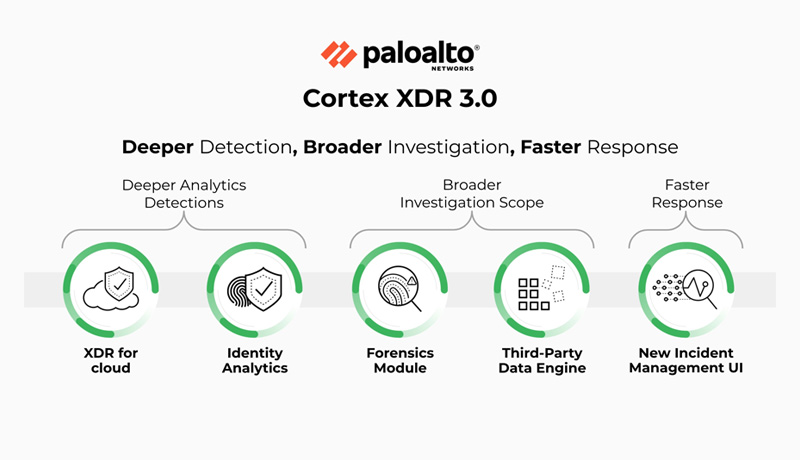
Palo Alto Networks has unveiled Cortex® XDR 3.0 for cloud. Third-generation XDR expands the company’s extended detection and response (XDR) solution to cloud- and identity-based threats, giving businesses the holistic analytics they need to defend against more sophisticated cyberattacks.

The third version of Cortex XDR, which already outperformed previous generations in the MITRE ATT&CK® test, now provides security operations center (SOC) teams with even more protection throughout their attack surface. By extending detection, monitoring, and investigation into cloud environments, as well as identifying malicious user activities and insider threats through identity data analysis, it is possible to detect malicious user activities and insider threats, Security analytics across endpoints, networks, clouds, and identities benefit SOC teams for organization-wide detection and response, which is crucial in an era of more interconnected assaults.
Furthermore, Cortex XDR 3.0 provides forensic investigation features based on Palo Alto Networks’ world-class Unit 42 Security Consulting group’s powerful proprietary technologies, as well as ingestion and custom correlations for practically all third-party data sources.
“Palo Alto Networks created the extended detection and response (XDR) category in 2019 — understanding that only by integrating data from across all security sources can we detect complex threats accurately, prevent attacks automatically, and investigate them much faster. We’ve been innovating against that mission ever since,” said Tim Junio, senior vice president of products, Cortex at Palo Alto Networks. “With our third-generation XDR solution expanding to cloud and identity analytics, Cortex XDR 3.0 has taken a large step towards being the most comprehensive platform for the SOC to protect endpoints, entities, assets, workloads, and critical data.”
Cortex XDR has been a top performer in the MITRE ATT&CK test for three years in a row, with the highest overall combined detection and protection rate. The new features of Cortex XDR 3.0 prepare SOC teams to know and stop assaults as cybersecurity threat actors become faster, more organised, and more sophisticated in their tactics, approaches, and procedures: